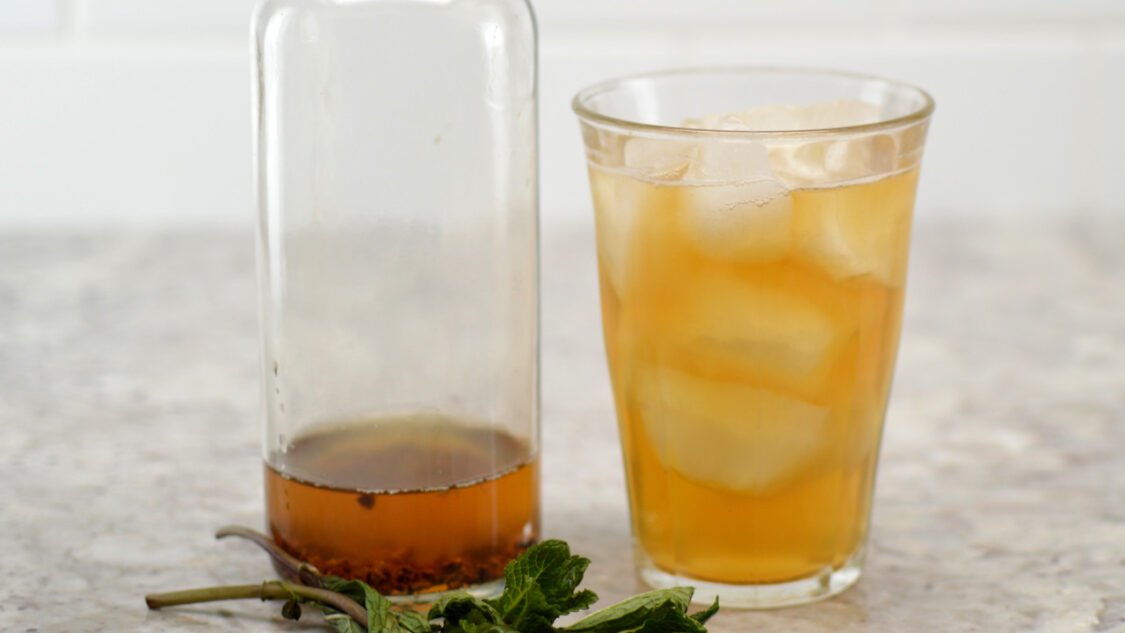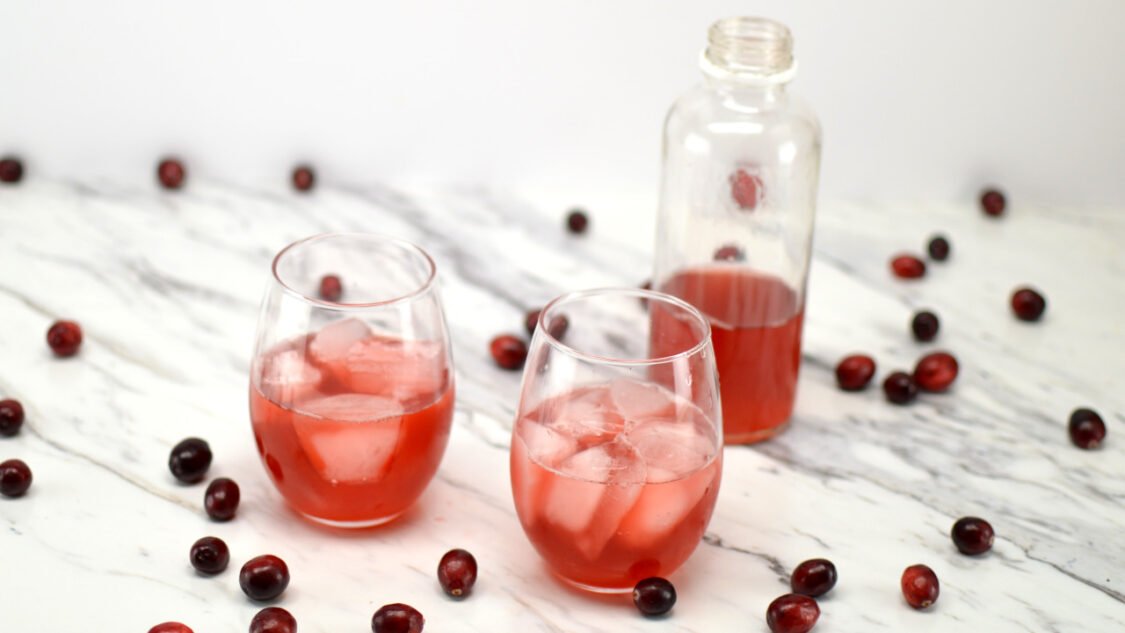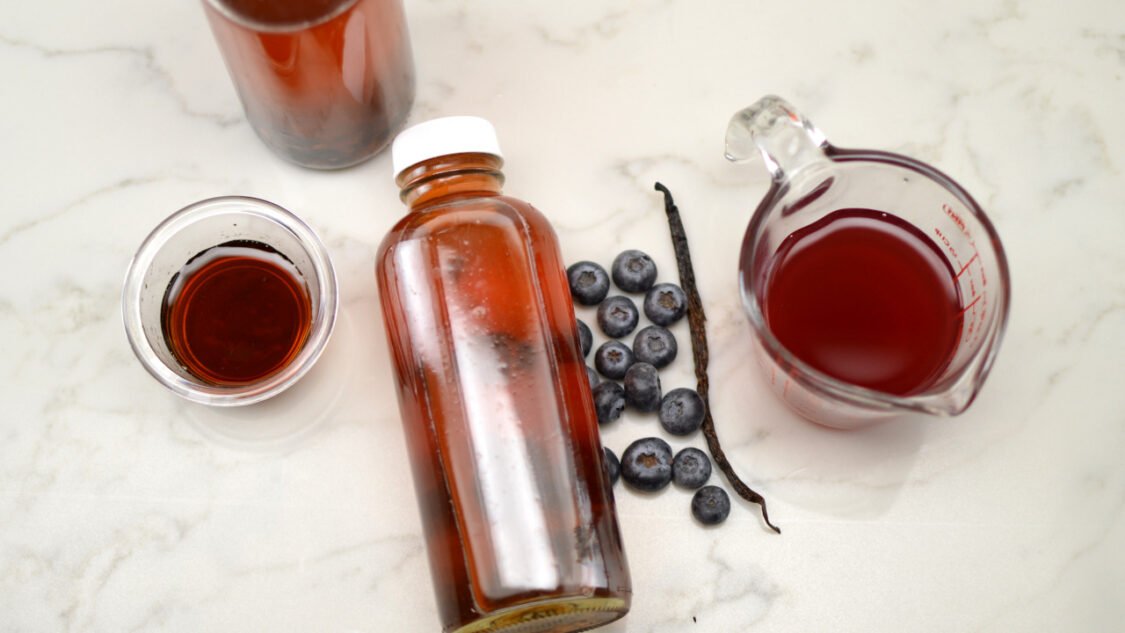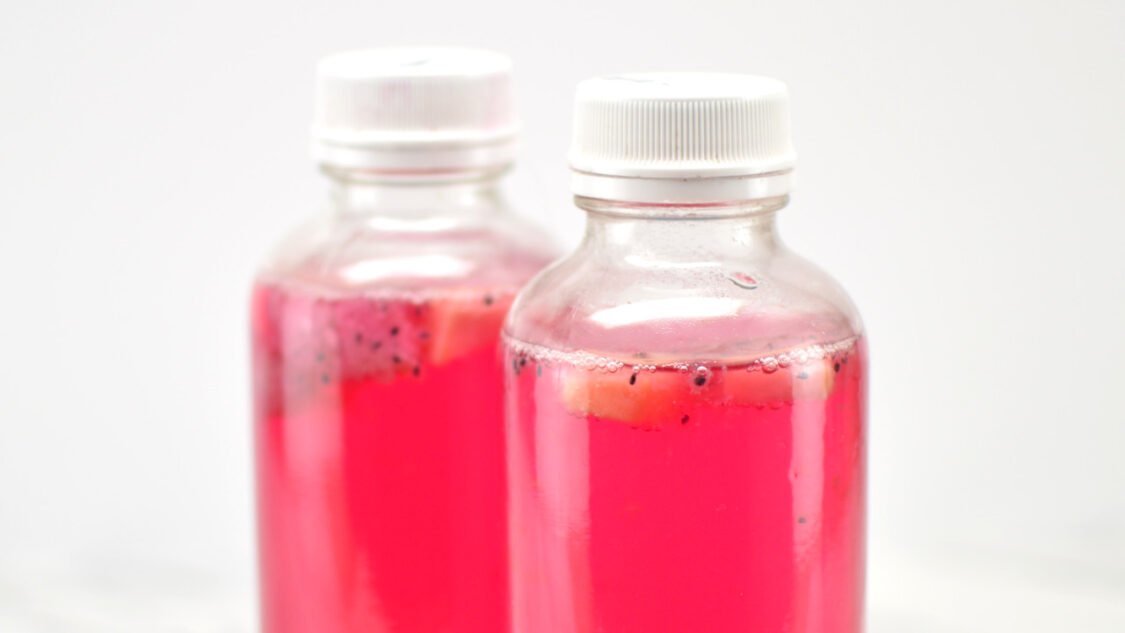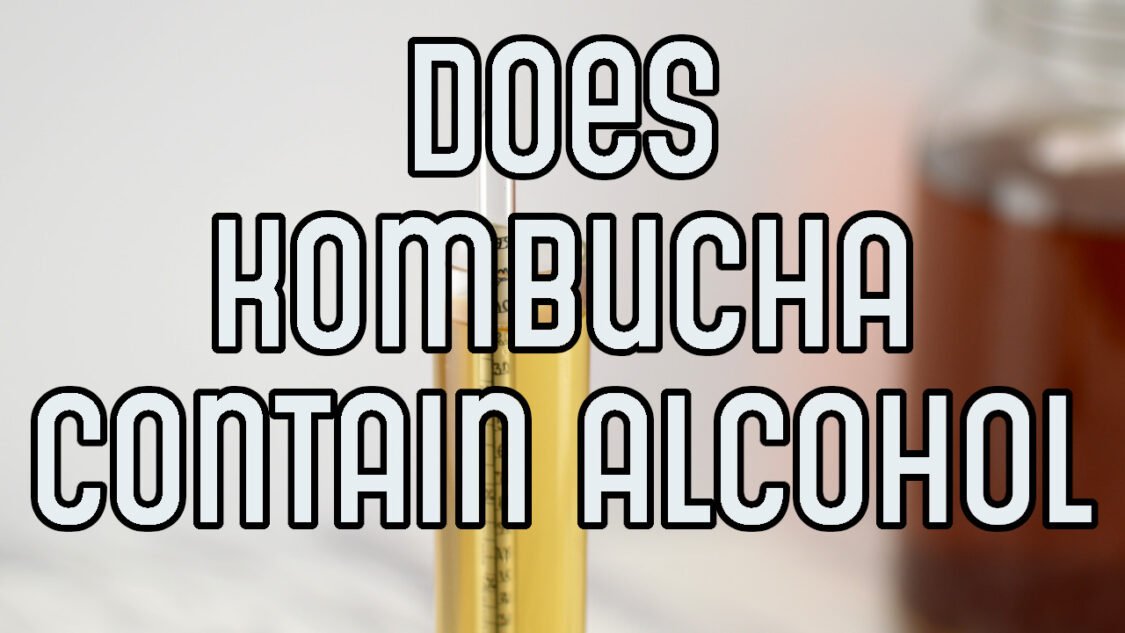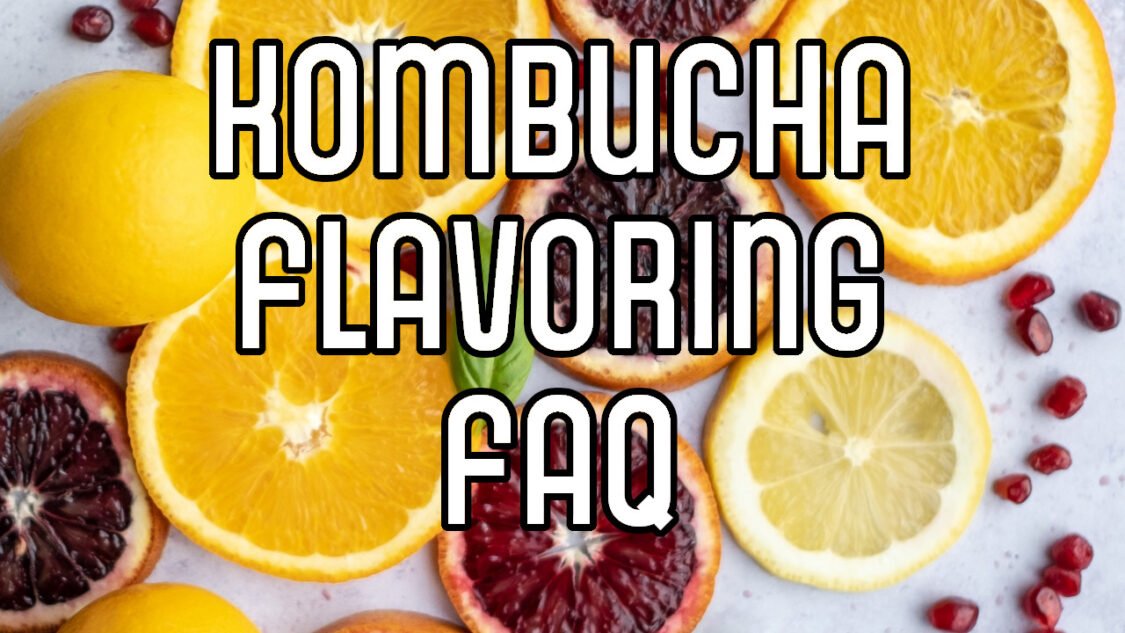Orange Creamsicle Kombucha

Whoever thought of making an orange creamsicle was a genius. Orange juice and milk (well, cream, sugar, etc) if you’ve every had them close together-or tired to mix them–you know it is not good. The orange creamsicle, with it’s shatteringly brittle, frozen-solid orange and smooth popsicle exterior and the soft, fluffy, vanilla ice cream in the middle is pure genius.
Even now, as an adult, I still find myself craving the contrasting tart and rich/sweet flavors of a creamsicle on hot summer days. It’s a nostalgic reminder of the carefree days of my childhood and the simple pleasures that brought so much joy (and is really tasty.)
This orange creamsicle kombucha will has a light orange color, evoking the solid orange popsicle shell of the creamsicle. It starts with and aroma of citrus with notes of vanilla and rich sweetness from the maple syrup.
Drinking this kombucha starts out tangy with a deep orange citrusy character followed by notes of vanilla. Try one the next time your hear the ice cream truck rolling through your neighborood!
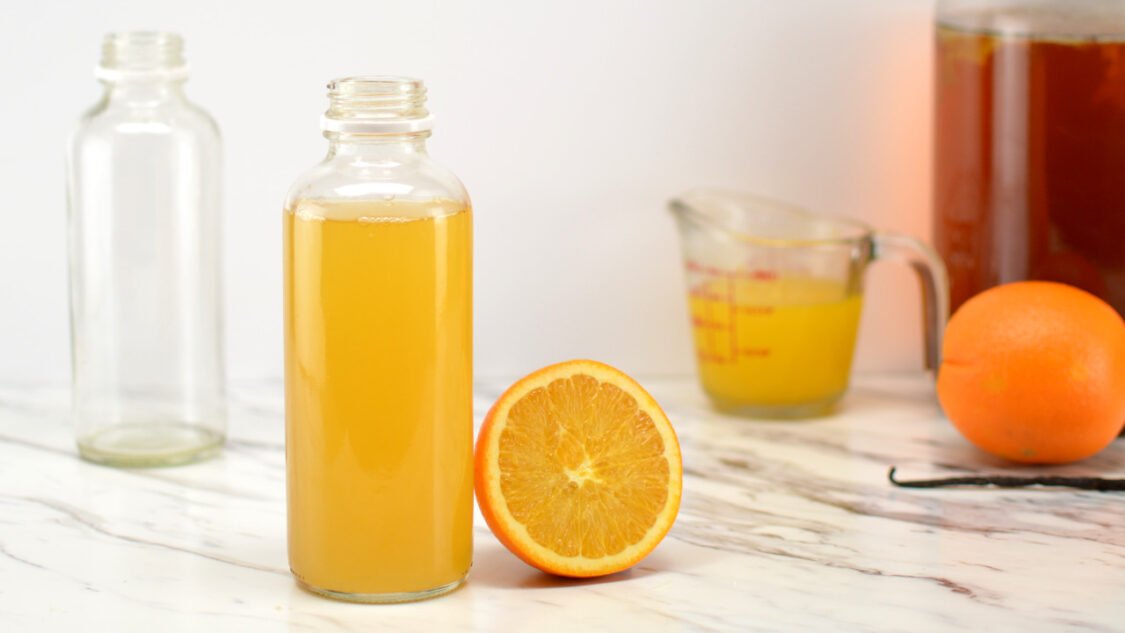
Kombucha Fermentation Overview
There are two fermentation phases when making kombucha:
Primary Fermentation: This is when you transform sweet tea into tart and tasty kombucha. Get all the details at my article on how to make kombucha.
Secondary Fermentation: This is when you carbonate your homemade kombucha by adding flavors (like oranges ? and vanilla) and sugars and bottling it.
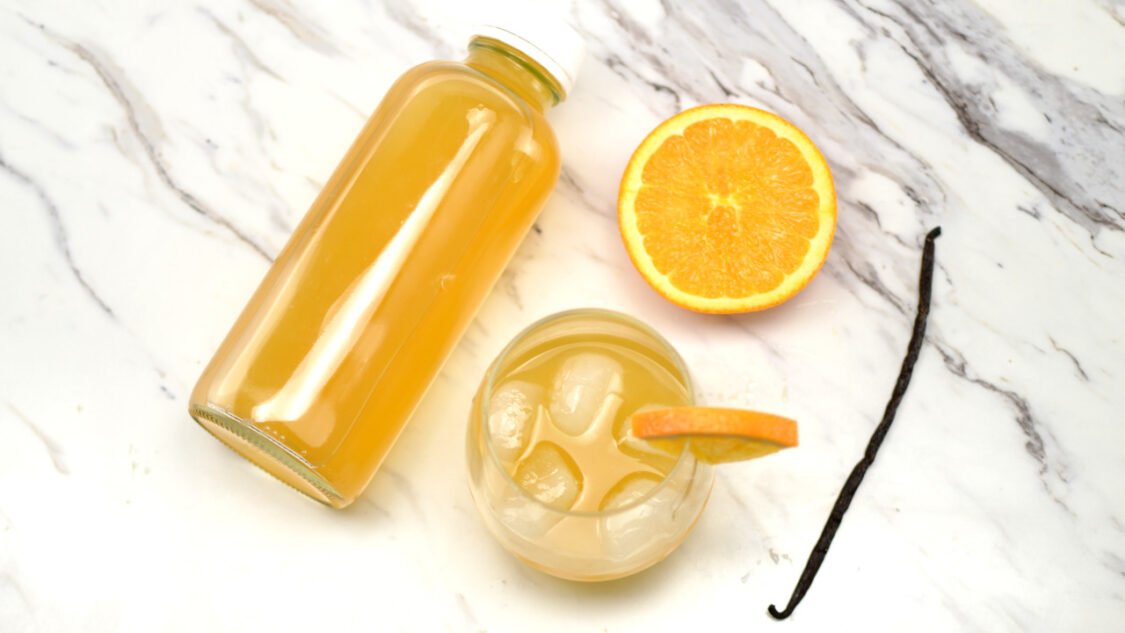
Preparing for Secondary Fermentation
This recipe makes about 7 x 16 fluid ounce bottles of finished kombucha (from a 1-gallon batch of unflavored homemade kombucha aka from your primary fermentation).
Reserve 2 cups (about 16 oz / 0.47L) kombucha and your SCOBY from your completed primary fermentation and set aside – you will use this as your starter for your next gallon batch of kombucha.
With your kombucha starter tea and SCOBY placed aside, you now have enough kombucha left to flavor and fill your bottles. This guide assumes are using 16 oz. glass bottles which are a popular choice for kombucha; however, there are many options for bottling kombucha.
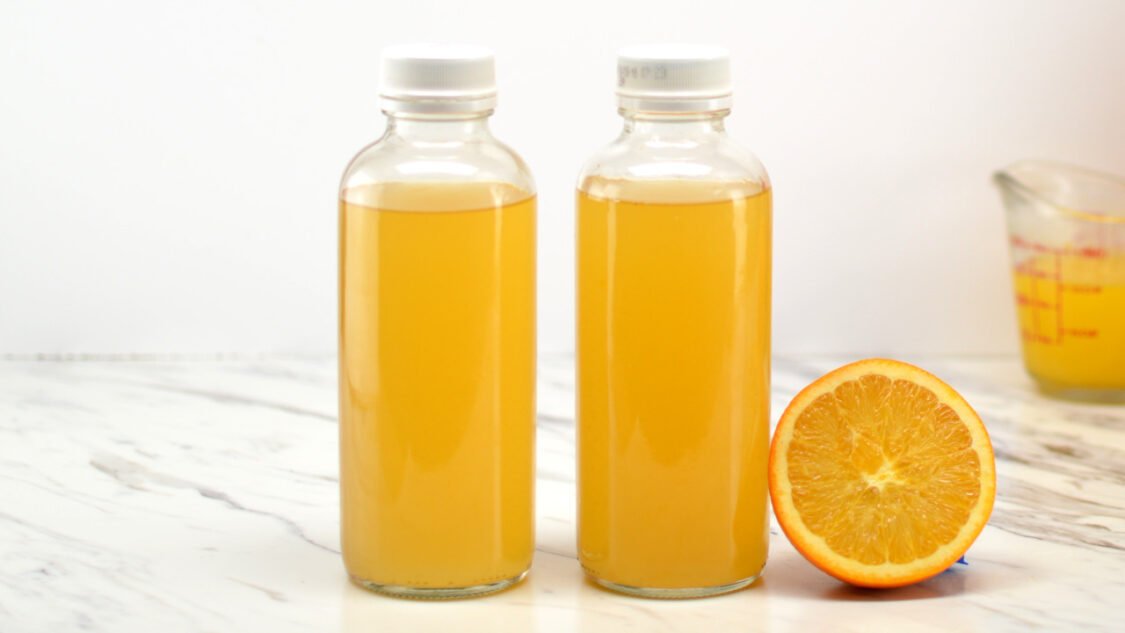
Ingredients to make Orange Creamsicle Kombucha
Kombucha Finished kombucha from your first fermentation is the base to which you will add the orange flavor
Oranges: Fresh oranges are preferred; however, freshly squeezed orange juice will also work. Before making orange kombucha, you should first taste the orange. It’s better to use a sweeter fruit to compliment the tartness of the kombucha. Oranges in a bag aren’t consistent with regard to of ripeness and sweetness; therefore, it’s a good idea to sample the orange before using in your kombucha.
Vanilla: There are several types of vanilla, typically named for where they are grown. Each type of vanilla bean has a very unique flavor.
Madagascar is the most popular type and Indian is a consistent favorite. Each type is slightly different:
- Madagascar Vanilla – rich and creamy. The most popular vanilla and most widely available
- Mexican Vanilla – bold, dark, smoky notes.
- Indian Vanilla – full bodied, chocolate notes. One of the favorites among vanilla lovers.
- Indonesian Vanilla – mild, well balanced. A good choice for kombucha.
- Tahitian Vanilla – floral, notes of cherries and chocolate.
Here is a comprehensive article all about vanilla ↗
Maple Syrup: Made from the concentrated sap of maple trees, maple syrup has a clean, complex maple flavor with hints of caramel, vanilla, and prune. I’m talking about the real deal here, not the artificial buttery flavored syrups. You may substitute sugar if you don’t have any real maple syrup on hand.
How to make Orange Creamsicle Kombucha
Add Flavors: Add chopped orange or orange juice to the bottles with vanilla.
Bottle: Transfer kombucha to fermentation bottles.
Condition: For 3 to 10 days, until it reaches the carbonation level you like.
Enjoy: Chill in the refrigerator before serving and strain out fruit pieces when pouring (optional)
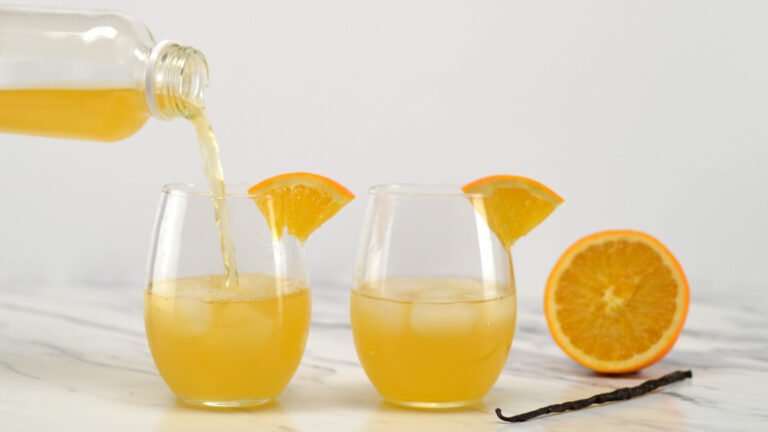
Orange Creamsicle Kombucha Recipe
Yield: 7 bottles • Active time: 20 minutes • Total time: 3 -10 days
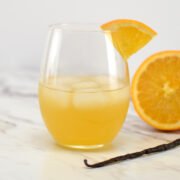
This recipe assumes you are doing a secondary fermentation (flavoring and carbonation) in the bottle. You may also incorporate a third fermentation using the same proportions but following the third fermentation steps.
Ingredients:
1 gallon homemade kombucha from a first fermentation, 1.9 L
2 oranges, peeled and chopped into 1/4-inch pieces (discard seeds)
1 tsp vanilla extract or 1/2 vanilla bean split and chopped
6 Tbsp. real maple syrup (or substitute 7 sugar cubes or 2 Tbsp. white sugar)
Instructions:
Prepare oranges: Peel and coarsely chop oranges, removing seeds and any biter pith. Alternatively you juice the orange which results in finished kombucha without fruit chunks
Prepare vanilla: If using a vanilla bean, slice it lengthwise and use the edge of a knife to scrape the seeds out. Coarsely chop vanilla bean pod. Add vanilla extract or chopped vanilla bean and seeds to chopped oranges. Mix well.
Flavor: Evenly divide chopped orange and vanilla mixture among bottles
Sweeten: Add 2 tsp maple syrup per 16 bottle or evenly divide sugar between bottles (about 1 tsp sugar per 16 0z bottle)
Fill bottles: Transfer kombucha into fermentation bottles, leaving about 1 inch empty at the top
Cap: Cap the filled bottles and tighten the cap snugly.
Ferment: Place in a dark, room temperature area for 3 to 10 days, until it reaches the carbonation level you like. This process will go faster in warmer climates, and slower in cooler climates.
Enjoy: Chill your orange creamsicle kombucha bottles in the fridge before serving and strain the kombucha to remove fruit pieces when serving (optional).
Homemade Kombucha can be stored in the fridge, tightly sealed, for several weeks.
Tips & Tricks:
Make sweet tea for your next batch the night before you flavor and bottling and let it cool on the stove overnight so that you can flavor your kombucha and get your next batch started at the same time.
If this is your first time brewing, it may be helpful to use a plastic water bottle as a gauge. Fill a recyclable plastic bottle with kombucha (leaving 1.5 inches empty at the top). When this bottle becomes rock hard, you’ll know the glass bottles are also ready. This will help you gauge how long it take for kombucha to carbonate your climate and will prevent bottle explosions.
Nutrition Information:
Kombucha Recipes You Might Also Like
More Kombucha Knowledge
Helping you learn to brew kombucha, find inspiration for new kombucha flavors and use kombucha to make kombucha mocktails

